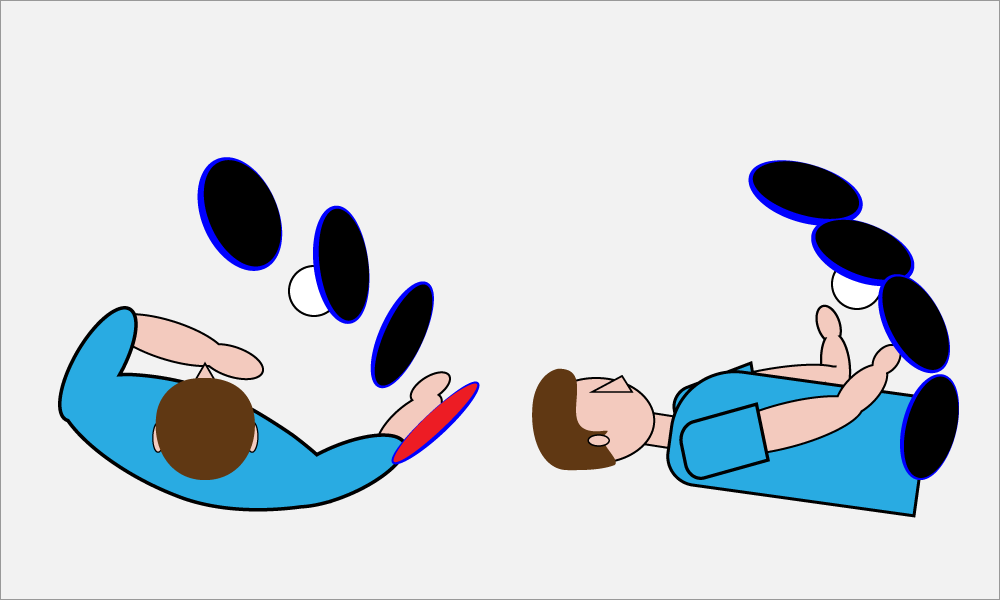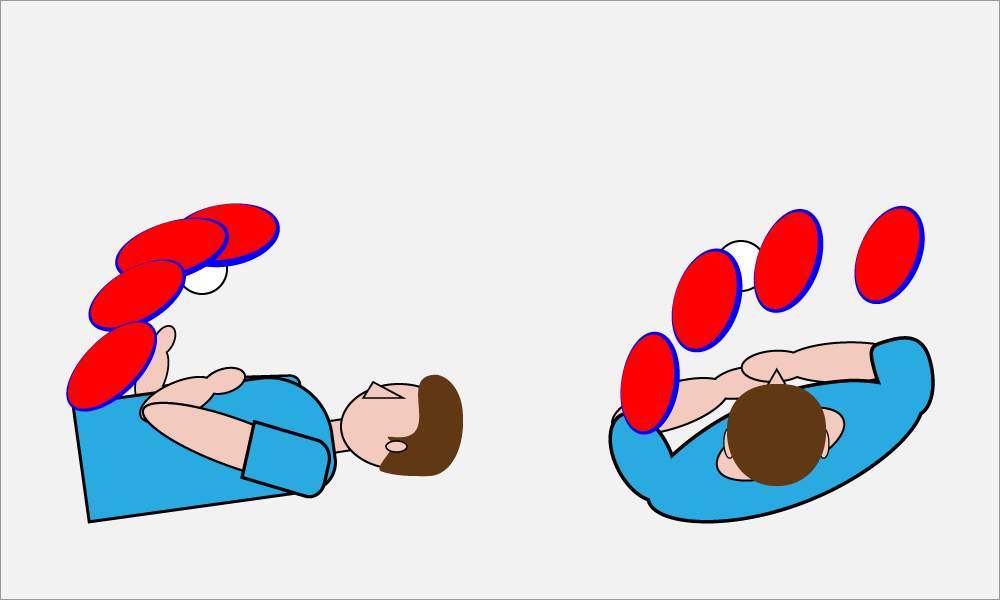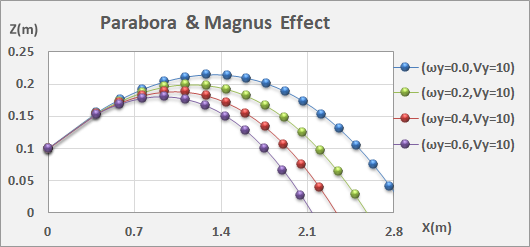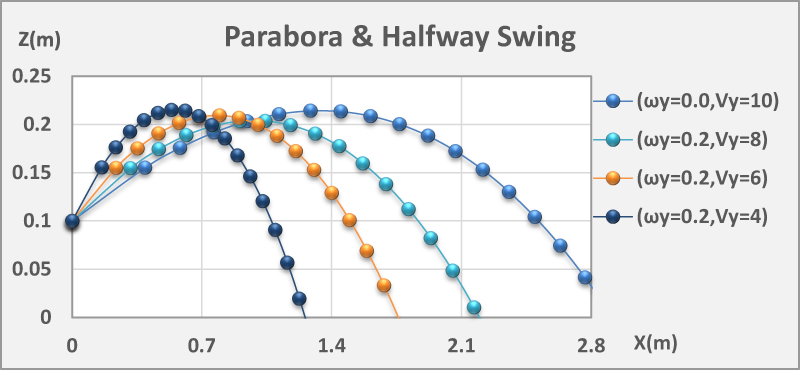1.8. The Basic of Swing
Before explaining the basics of swing, I would like to confirm the basic posture of the racket swing. If the racket swing is a missile engine, the basic posture is equivalent to the launch pad of the missile. If this launch pad is poor, it will not be able to exert its engine performance. It doesn't start in the first place. First, it is necessary to read Section 3.1. the Basic Posture of Racket Swing.
Then, after reading this section, I recommend you to proceed with reading Section 2.13. The Basic of Drive Spin Rallies. if you do the swing that were transcribed into the mirror, the ball flight will be stable.
1.8.1 Equation of Swing
Racket swing can be classified into roughly five types, depending the joints on which are used.
- Swing by the rotation of shoulder joint stretching the arm.
- Swing by the elbow folding 90 degrees or swing by bending and stretching the elbow joint.
- Swing by the rotation of wrist joint.
Which swing are you using above? Generally, at games, people would use unconsciously the muscles who they can apply the most force. Especialy beginners swing the racket by using their entire arm. This is bad.
Actually, it is necessary to use each swing method properly according to the situation.
- Extend the arm and swing at the shoulder joint when you are far from the table.
- Swing using the elbow joint is used when you are close to the table.
- The swing of the wrist joint is used when swinging on the table.
In mechanics, there is "a inertia moment (difficulty of starting or stopping)" to represent the difficulty of rotation.
Further, in the next section 1.9 “Relation between ball and swing”, the relations between the flight distance of the ball and the swing radius is described in detail mechanically.
Even if you make a mistake, do not swing the racket by rotating your hips. In dynamics, the moment of inertia is used to express the difficulty level of rotation (difficulty in movement and difficulty in stopping).
Inertia moment = (Rotational radius) 2 × Mass
The mass of the body is much larger than the mass of the racket, and it is not suitable for table tennis that requires speed because braking takes too much time.
1.8.2 Basic swing
Let's look at the basic swing. This is the swing that beginners should be acquire in the first.
Here, the racket is assumed that using the red rubber on the front side and the black rubber on the back side.
By swinging the arm to the foward direction to give a flight to the ball.
Using the flexion and extension of the elbow joint, give a jump to the ball by swinging forward. Extend your elbow before hitting and bend the extended elbow to strike the ball.

Tilt the racket head to the upper left 45 degrees, and rub the ball at 2 o'clock right toward the left end corner of the table sharply without hesitation.

Tilt the racket head to the upper right 45 degrees, and rub the ball at 10 o'clock right toward the right end corner of the table sharply without hesitation.
1.8.3 Swing complete until the end
To hit the ball at the fastest point of the swing is important. And, any swings must not stop in middle. You have to swing complete until the end in any cases. This is order to put a ball into the opponent's court by Magnus effect of giving a drive spin.

Left figure shows the ball trajectories when it was completed the swing with a parameter of drive spin.
Vy = 10 indicates a initial velocity of 10m / s.
ωy shows the drive spin rating.
ωy = 0 is the case of the ball not spinning.
When the drive spin becomes faster, the brake effect increases, and the risk that the ball jumps over the table is reduced.

The left figure shows the ball trajectories when it was stopped the swing in middle. This figure shows that the ball is caught in the net. When you stop in the middle of the swing, the initial velocity of the ball is slow, the spin is also low. Since the ball has no momentum, even though the ball entered the opponent's court, the ball that you returned will be easy attack-able.